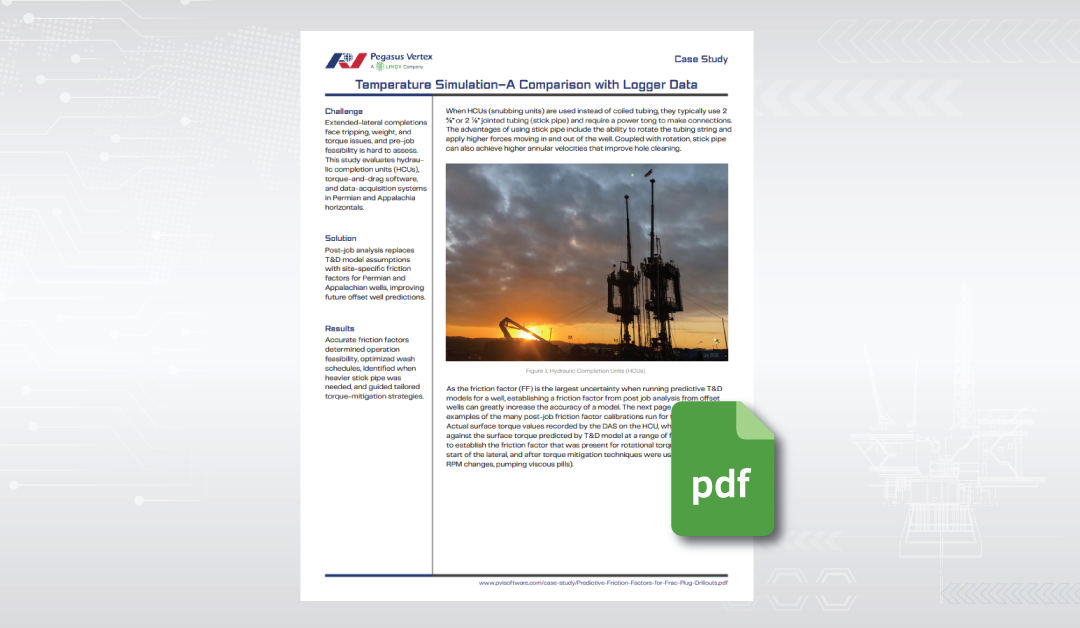Extended laterals are pushing the boundaries of what’s possible in unconventional completions. But with these long, complex wells come operational headaches—especially when drilling out frac plugs. Operators often struggle with how to manage tripping all the way to total depth, applying the right amount of weight down or pull up, and controlling rotary torque. These factors don’t just impact how quickly the job gets done—they influence safety, equipment wear, and ultimately, well productivity. In some recent operations in the Permian and Appalachian basins, a service provider faced exactly these challenges. They knew that relying on traditional torque and drag (T&D) models meant accepting big assumptions—particularly around friction factors, which can wildly change predicted torque. But what if those friction factors could be nailed down, based on actual data instead of estimates?
Integrating Technologies to Improve Predictive Accuracy
Longer wells and sharper inclinations increase contact between the pipe and wellbore, leading to heightenThe combined use of hydraulic completion units (HCUs), torque and drag software, and data acquisition systems (DAS) enabled a more precise understanding of downhole friction.
HCUs operate with jointed tubing—known as stick pipe—rather than coiled tubing, offering the ability to rotate the string and apply higher forces during tripping. This rotation also increases annular velocity, improving hole cleaning. Simultaneously, DAS collected real-time surface torque data during frac plug drill-out operations. By correlating measured torque with T&D model outputs across a range of friction factors, operators identified actual friction conditions rather than relying on generic assumptions.
Operational Improvements and Benefits
Preventing such outcomes requires more than intuition—it demands detailed modeling across the full This data-driven calibration yielded multiple benefits:
- Enhanced Job Planning: Operators could accurately assess the feasibility of planned completions ahead of time, reducing operational risks.
- Optimized String Design: Insights guided decisions on tubing weight and dimensions, selecting heavier pipe in vertical sections and lighter tubing in lateral sections.
- Time Savings: Washing schedules were refined based on actual friction behavior, minimizing unnecessary cleanings and associated delays.
- Targeted Problem Resolution: When torque anomalies occurred, precise T&D models facilitated rapid diagnosis and corrective action, such as RPM adjustments or pumping viscous pills.
- Informed Risk Management: The approach supported evaluation of logistical and commercial trade-offs for torque mitigation strategies.
Want to dive deeper into the findings? View the full case study here.
Advancing Completion Reliability Through Data-Driven Models
Once the modeling is complete, the insights need to be usable—not just by engineers, but by the bThe integration of HCUs, T&D modeling, and real-time torque data provides a foundation for more reliable extended lateral completions. By replacing friction assumptions with calibrated factors, operators gain clarity on downhole forces, enabling safer and more efficient operations.
Simulation tools like TADPRO have demonstrated high accuracy in predicting downhole friction and torque behavior, allowing engineers to optimize completion job planning with confidence. By leveraging well-calibrated torque and drag models based on real-time data, completion professionals can improve operational efficiency, reduce risk, and enhance overall job reliability.
Want to learn how TADPRO can optimize your completion operations? Contact our team today.

